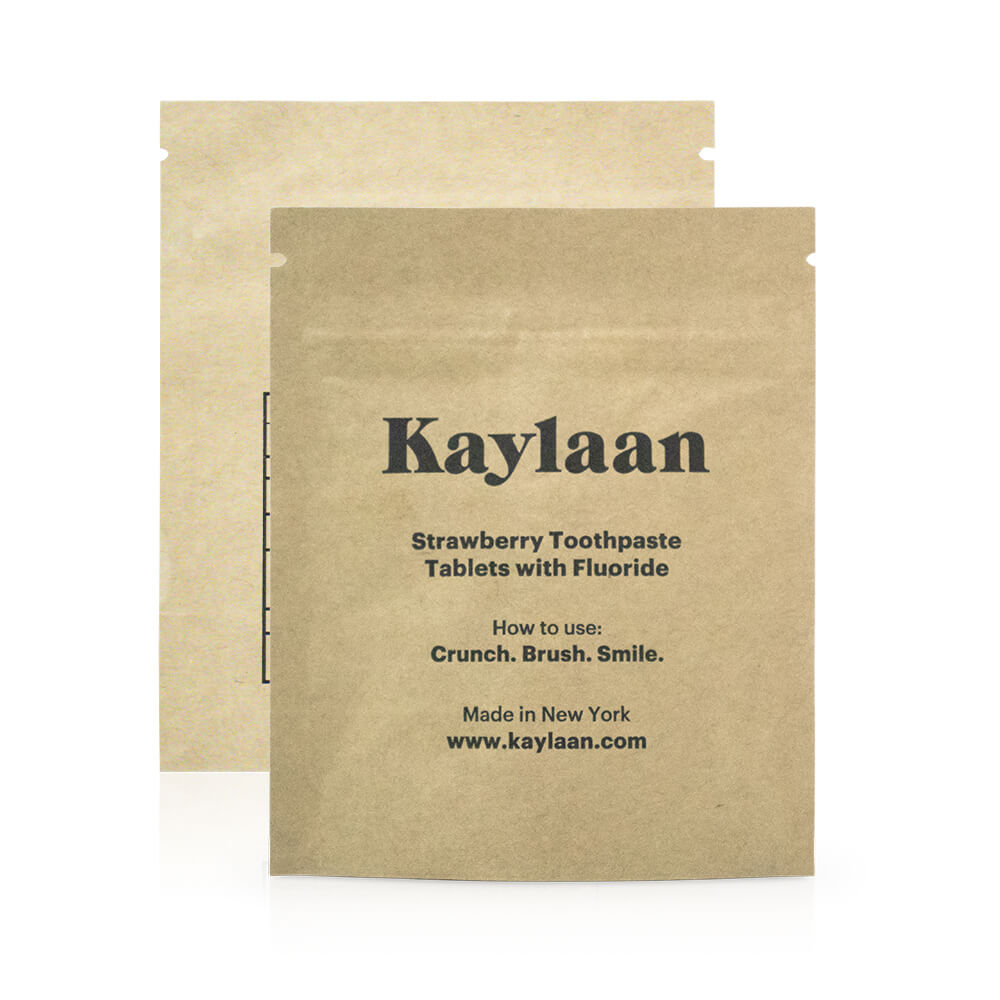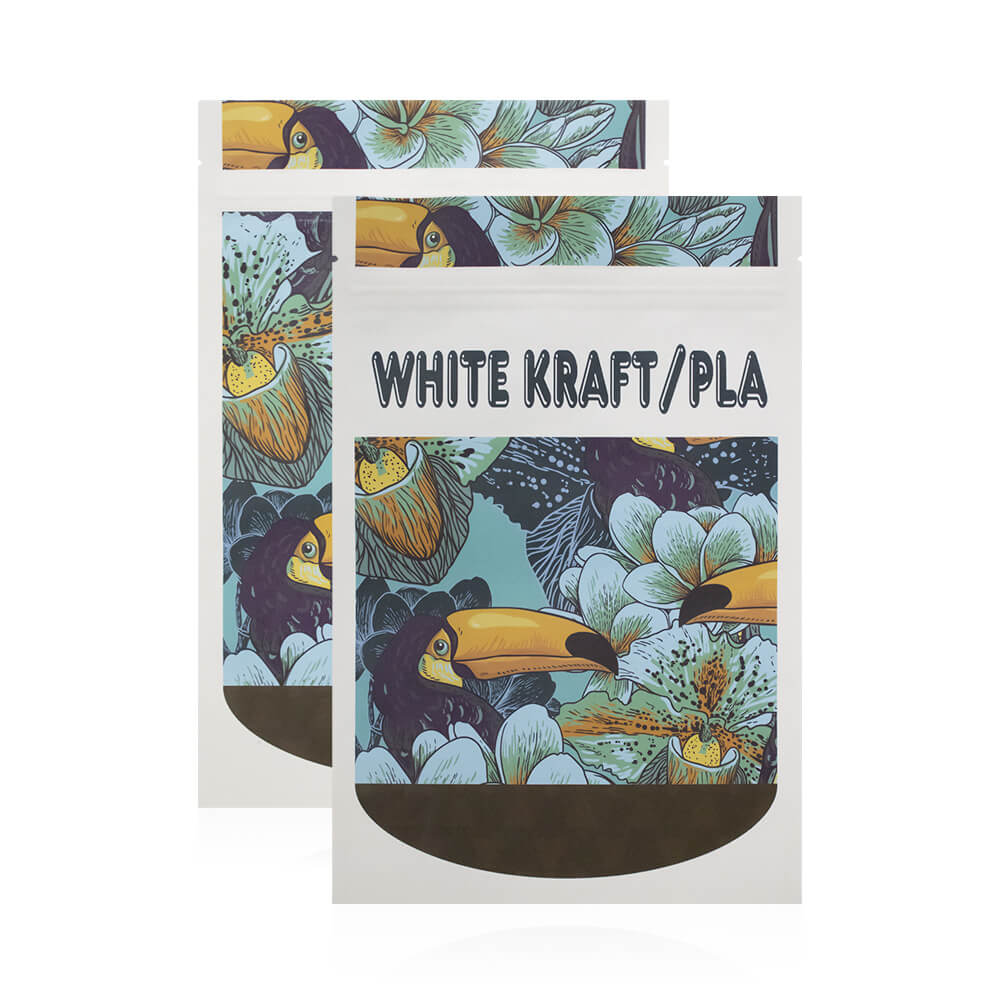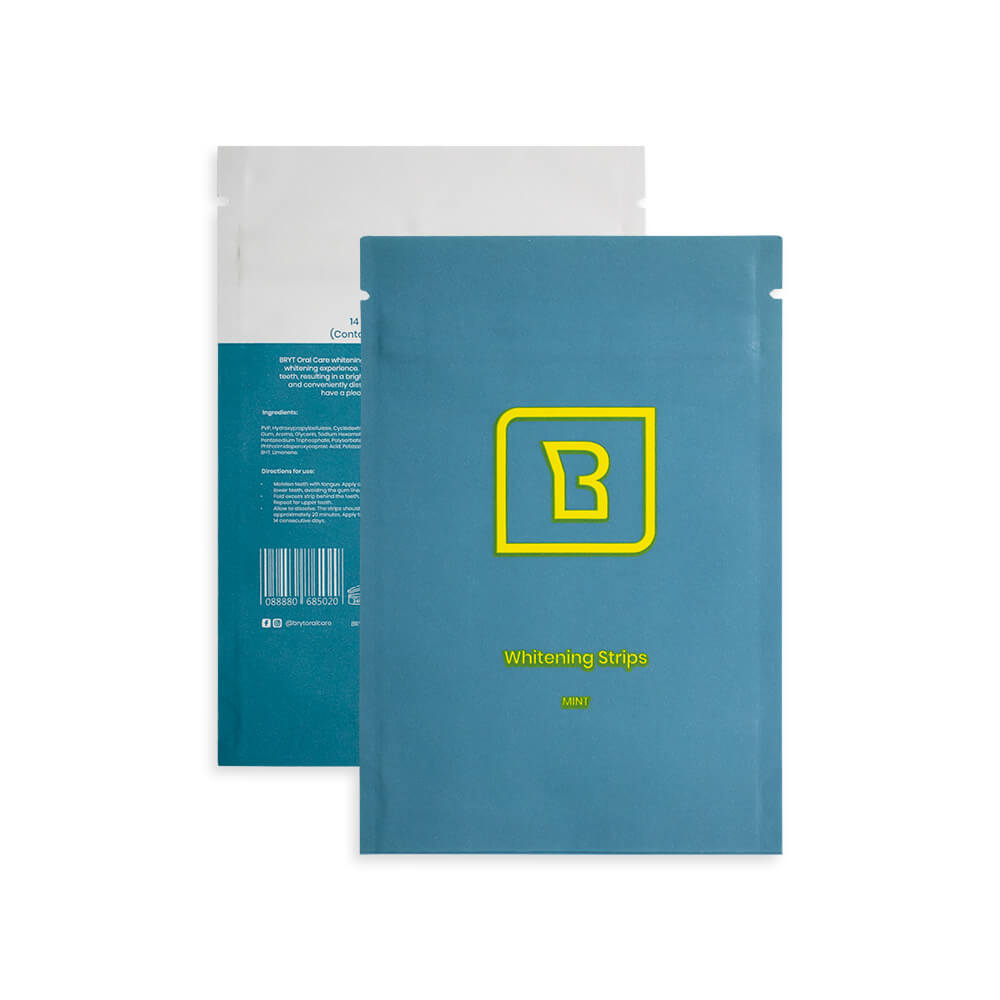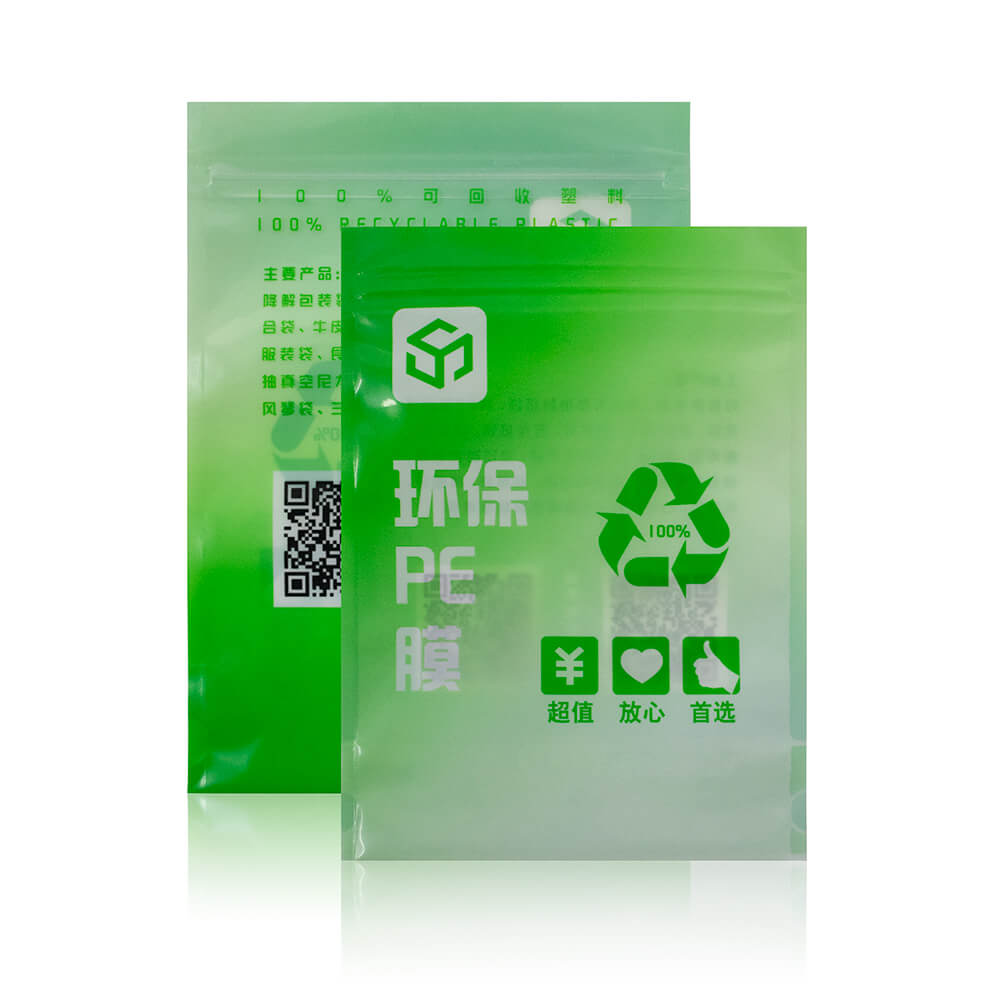Home » Bags & Pouches » Sustainable Pouches » Biodegradable Pouches
Biodegradable Pouches
Biodegradable pouches are eco-friendly creations, crafted to have a minimal footprint on the environment. Flexible packaging has inherent sustainability features that make it a great choice for customers interested in improving their environmental impact.
Please note that we have a MOQ for our pouch. For pouches in stock, the MOQ is 500 pcs. For customized pouches, please see the MOQ as followed:
1, Digital Printing — 500 pcs
2, Gravure Printing — 5,000pcs
Rinpac assists you throughout your project: bag shape, material, thickness, capacity and printing options. Please contact us or mark your requirements on the inquiry quotation.
Order single or thousands of items at a time. Our warehouse and flexible shipping options are available for last-minute, deadline critical orders.
- Free Sample
*Customization is always available, please mark down your need in cart or just contact us.
Specification
| Features | High-barrier films Photo-quality images Glossy or matte finishes Transparent + clouded windows Puncture and tear-resistant Press-to-close zippers |
| Material | Biodegradable material |
| Thickness | Per the customer’s request |
| Feature | High barrier, moisture-proof, biodegradable |
| OEM | Yes |
| MOQ | 500 PCS |
| Custom Order | Accept |
Video
Request A Quote
Need something helped in a short time? We’ve got a plan for you.
Introduction to Biodegradable Pouches
In today’s environmentally conscious world, the demand for sustainable packaging solutions has surged. Among these solutions, biodegradable pouches have gained significant traction. These pouches offer a promising alternative to traditional plastic packaging, addressing concerns about pollution and waste management. In this comprehensive guide, we delve into the intricacies of biodegradable pouches, exploring their composition, benefits, applications, and environmental impact.
Understanding Biodegradable Materials
Biodegradable pouches are made from materials that can naturally decompose over time, such as plant-based polymers like PLA (polylactic acid), PHA (polyhydroxyalkanoates), and PBAT (polybutylene adipate terephthalate). Unlike conventional plastic, which can persist in the environment for hundreds of years, biodegradable materials break down into harmless substances through biological processes, such as microbial action.
What Are Biodegradable Pouches Made Of?
Biodegradable pouches are made from a variety of materials that are specifically chosen for their ability to decompose naturally without leaving harmful residues in the environment. Some of the common materials used in the production of biodegradable pouches include:
1. Polylactic Acid (PLA):
PLA is a biodegradable and bio-based polymer derived from renewable resources such as corn starch or sugarcane. It is known for its transparency, strength, and versatility, making it suitable for a wide range of packaging applications.
2. Polyhydroxyalkanoates (PHA):
PHA is a family of biodegradable polymers produced by microorganisms through fermentation of renewable feedstocks like plant oils or sugars. These polymers offer excellent biodegradability and can be tailored to meet specific packaging requirements.
3. Polybutylene Adipate Terephthalate (PBAT):
PBAT is a biodegradable copolyester commonly used in combination with other biopolymers to enhance flexibility and mechanical properties. It is compostable under industrial conditions, breaking down into carbon dioxide, water, and biomass.
4. Starch-Based Polymers:
Starch-based polymers are derived from renewable sources such as corn, wheat, or potatoes. These polymers can be processed into films and coatings for biodegradable pouches, offering good barrier properties and compatibility with existing packaging machinery.
5. Cellulose Derivatives:
Cellulose derivatives, such as cellulose acetate and cellulose acetate butyrate, are derived from plant cellulose and can be used to produce biodegradable films and coatings. These materials offer biocompatibility and can be composted or recycled after use.
6. Polyethylene Terephthalate (PET) Alternatives:
Some companies are developing biodegradable alternatives to traditional PET plastics, utilizing bio-based polymers or additives that facilitate microbial degradation. These alternatives offer similar performance characteristics while reducing environmental impact.
7. Aliphatic Polyesters:
Aliphatic polyesters, including polycaprolactone (PCL) and polyglycolic acid (PGA), are biodegradable polymers derived from petrochemical or renewable sources. These polymers exhibit excellent biocompatibility and can be composted under controlled conditions.
By utilizing these biodegradable materials, manufacturers can create pouches that not only provide effective packaging solutions but also contribute to reducing plastic pollution and promoting sustainability.
Benefits of Biodegradable Pouches
Biodegradable pouches offer a plethora of benefits, particularly in terms of environmental sustainability and reducing plastic pollution. Here are some key advantages:
Environmental Benefits:
1. Reduction of Plastic Pollution:
Biodegradable pouches help mitigate the pervasive issue of plastic pollution by offering a sustainable alternative to traditional plastic packaging. Unlike conventional plastics, which can persist in the environment for centuries, biodegradable pouches break down naturally into non-toxic components, reducing the accumulation of plastic waste in landfills, oceans, and ecosystems.
2. Biodegradability and Compostability:
One of the primary advantages of biodegradable pouches is their ability to biodegrade and compost under suitable conditions. These pouches are typically made from plant-based materials or biodegradable polymers that can be broken down by microorganisms into organic matter, water, and carbon dioxide. This natural degradation process contributes to soil enrichment and helps close the nutrient cycle, reducing the burden on waste management systems.
3. Conservation of Resources:
By utilizing renewable resources such as plant starches, oils, and cellulose derivatives, biodegradable pouches reduce reliance on finite fossil fuels and non-renewable resources. This shift towards bio-based materials promotes sustainable resource management and fosters a circular economy where materials are reused, recycled, or returned to nature at the end of their lifecycle.
4. Carbon Footprint Reduction:
The production and disposal of traditional plastic packaging contribute significantly to greenhouse gas emissions and climate change. In contrast, biodegradable pouches often have a lower carbon footprint due to their reliance on renewable feedstocks and energy-efficient manufacturing processes. By choosing biodegradable options, businesses and consumers can reduce their environmental impact and mitigate climate-related risks.
Reduction of Plastic Pollution:
One of the most significant advantages of biodegradable pouches is their contribution to reducing plastic pollution. Unlike traditional plastic packaging, which can persist in the environment for hundreds of years, biodegradable pouches are designed to break down naturally into non-toxic components. By utilizing materials that decompose over time, these pouches help minimize the accumulation of plastic waste in landfills, oceans, and ecosystems. This reduction in plastic pollution has far-reaching benefits for wildlife, marine ecosystems, and human health, as it mitigates the harmful effects associated with plastic contamination.
Biodegradability and Compostability:
Biodegradable pouches are designed to biodegrade and compost under appropriate conditions, making them an environmentally friendly alternative to conventional plastic packaging. Made from organic materials such as plant-based polymers or biodegradable plastics, these pouches can be broken down by microorganisms into natural compounds like water, carbon dioxide, and organic matter. This process not only reduces the burden on waste management systems but also enriches soil quality and promotes nutrient cycling. By composting biodegradable pouches, organic waste is diverted from landfills, thereby reducing methane emissions and supporting sustainable waste management practices.
Benefits of Biodegradable Pouches
Environmental Sustainability
One of the primary advantages of biodegradable pouches is their positive environmental impact. By utilizing renewable resources and reducing reliance on fossil fuels, these pouches help mitigate carbon emissions and lessen the burden on landfills and oceans. Their ability to biodegrade into non-toxic components ensures minimal harm to ecosystems, wildlife, and human health.
Versatility and Functionality
Biodegradable pouches offer versatility in packaging various products, including food, beverages, personal care items, and household goods. They come in various shapes, sizes, and formats, accommodating diverse packaging needs. Additionally, these pouches can be customized with features like resealable zippers, spouts, and clear windows, enhancing convenience and consumer experience.
Brand Image and Consumer Perception
As consumers become more environmentally conscious, businesses are increasingly adopting sustainable practices to align with consumer values. Using biodegradable pouches not only demonstrates a commitment to environmental responsibility but also enhances brand image and fosters consumer trust and loyalty. Brands that prioritize sustainability are viewed favorably by eco-conscious consumers, contributing to long-term success and competitiveness.
Applications of Biodegradable Pouches
Biodegradable pouches find diverse applications across various industries, offering sustainable packaging solutions for a wide range of products. Some of the key applications of biodegradable pouches include:
Food Packaging:
Biodegradable pouches are extensively used in the food industry for packaging a variety of products, including snacks, baked goods, dry ingredients, and beverages. These pouches provide excellent barrier properties, protecting food items from moisture, oxygen, and light exposure, thereby extending shelf life and maintaining freshness. Whether it’s organic snacks, gourmet coffee, or health foods, biodegradable pouches offer a sustainable packaging solution that meets consumer demands for eco-friendly alternatives.
Agriculture:
In agriculture, biodegradable pouches are utilized for applications such as seed packaging, fertilizer sachets, and soil amendment products. These pouches are designed to degrade naturally in the soil, releasing nutrients and enhancing soil fertility. By using biodegradable materials, farmers can minimize plastic waste and promote sustainable agricultural practices that prioritize soil health and environmental stewardship.
Pharmaceutical Industry:
Biodegradable pouches play a vital role in the pharmaceutical industry, where sterile and tamper-evident packaging is essential for maintaining product integrity and safety. These pouches are used for packaging medications, supplements, medical devices, and personal care products. Biodegradable materials ensure that packaging waste is minimized, reducing the environmental impact of pharmaceutical products throughout their lifecycle. Additionally, biodegradable pouches support regulatory compliance and sustainability goals within the healthcare sector.
Innovations in Biodegradable Pouches
Innovations in biodegradable pouches have been driven by advancements in materials science and manufacturing processes, leading to enhanced performance, sustainability, and versatility. Here are some notable innovations in the field:
Advanced Materials:
1. Bio-Based Polymers:
Innovations in bio-based polymers, such as polylactic acid (PLA), polyhydroxyalkanoates (PHA), and polybutylene adipate terephthalate (PBAT), have expanded the range of biodegradable materials available for pouch manufacturing. These materials are derived from renewable resources like corn starch, sugarcane, or plant oils, offering comparable or superior properties to conventional plastics while minimizing environmental impact.
2. Nanotechnology:
Nanotechnology has enabled the development of biodegradable materials with enhanced mechanical, barrier, and antimicrobial properties. By incorporating nanoparticles into polymer matrices, researchers have achieved improved strength, flexibility, and shelf life in biodegradable pouches. Nanocomposite materials also offer opportunities for functionalization and customization to meet specific packaging requirements.
3. Composite Materials:
Composite materials, combining biodegradable polymers with natural fibers, minerals, or additives, have emerged as innovative solutions for biodegradable pouches. These materials offer a balance of strength, biodegradability, and cost-effectiveness, making them suitable for a wide range of applications. By leveraging the synergistic properties of different components, composite materials enhance performance while reducing environmental impact.
Improved Manufacturing Processes:
1. Extrusion Technology:
Advancements in extrusion technology have enabled precise control over the processing parameters and properties of biodegradable films used in pouch manufacturing. By optimizing extrusion conditions, manufacturers can achieve uniform thickness, clarity, and barrier properties in biodegradable pouches, ensuring quality and consistency in production.
2. Additive Manufacturing (3D Printing):
Additive manufacturing, or 3D printing, offers novel approaches to producing biodegradable pouches with complex geometries and customizable designs. This technology allows for rapid prototyping and small-scale production, facilitating innovation and customization in packaging solutions. By utilizing biodegradable filaments or resins, 3D printing enables the creation of sustainable packaging with minimal material waste.
3. Sustainable Packaging Design:
Innovations in packaging design focus on optimizing material usage, reducing packaging waste, and enhancing recyclability or biodegradability. Design strategies such as lightweighting, mono-material structures, and modular packaging systems contribute to resource efficiency and environmental sustainability. By incorporating sustainability principles into packaging design, manufacturers can minimize environmental impact while meeting consumer demands for eco-friendly solutions.
Conclusion
In conclusion, biodegradable pouches represent a significant advancement in packaging technology, offering a sustainable alternative to traditional plastic packaging. With their environmental benefits, versatility, and innovative features, biodegradable pouches are poised to revolutionize the packaging industry and contribute to a more sustainable future. From reducing plastic pollution to promoting compostability and embracing advanced materials and manufacturing processes, biodegradable pouches embody the principles of circular economy and environmental stewardship.
As businesses and consumers increasingly prioritize sustainability, the adoption of biodegradable packaging solutions is expected to continue growing, driving innovation and positive change across industries. By harnessing the potential of biodegradable pouches and supporting ongoing research and development efforts, we can pave the way towards a greener, healthier planet for generations to come.




